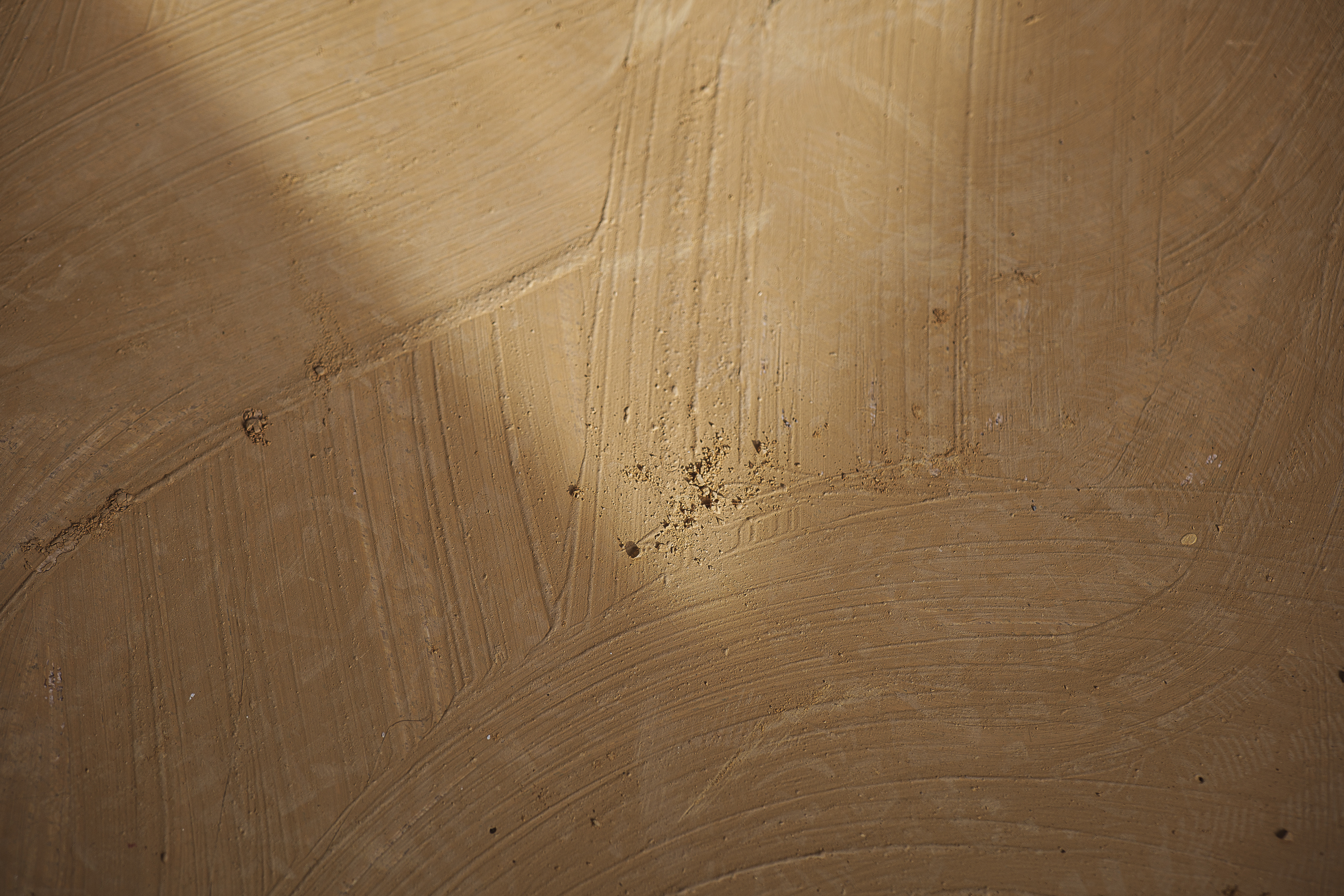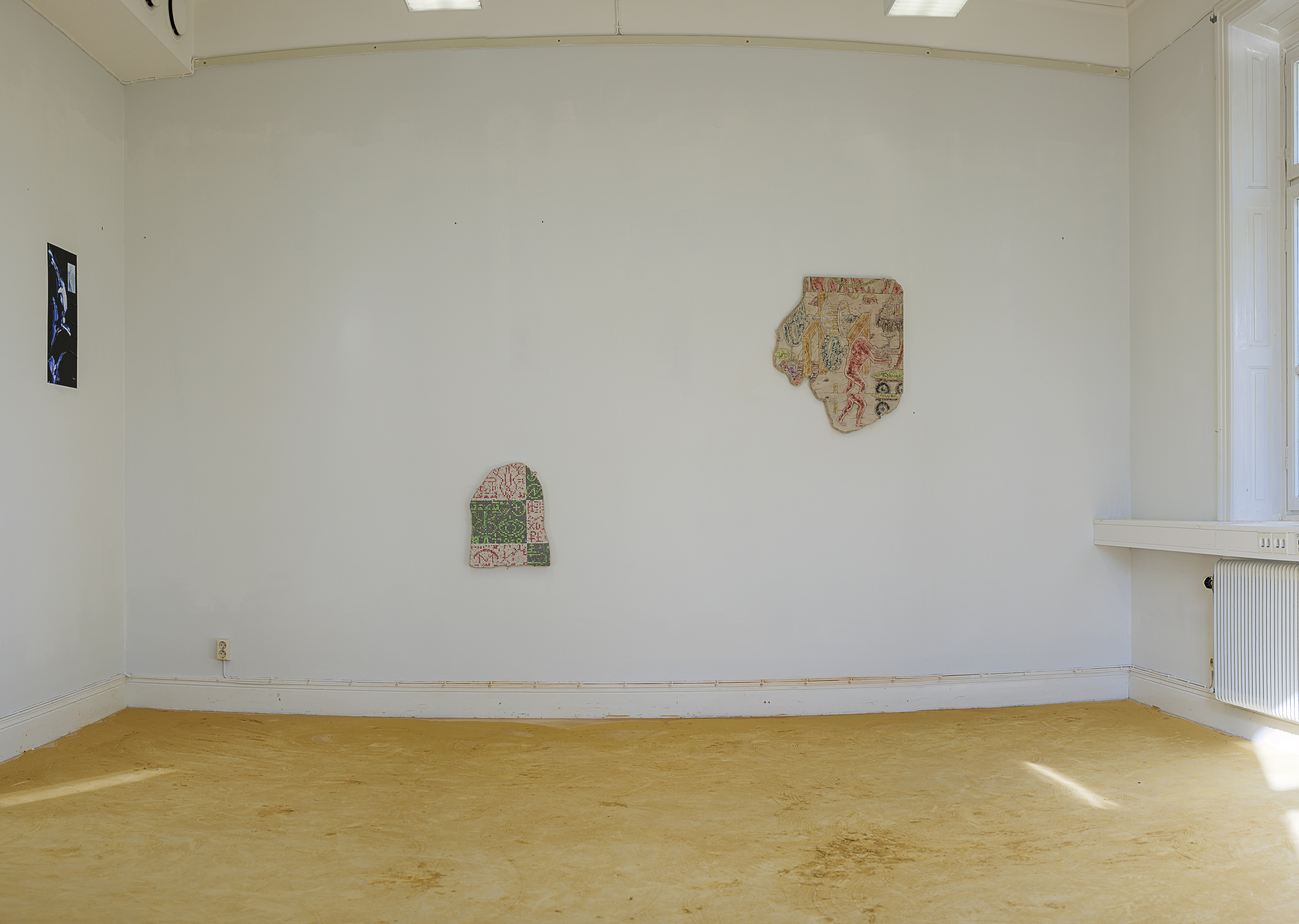
Thorn in the Mud - Ateljéföreningen Hospitalet
September - October 2022
Artists: Valentina Alvarado Matos, Gian Cruz, Ignacio García Sánchez, Irati Inoriza
Curator: Alba Folgado
Let us think of mud as an opaque and aqueous medium; which hides but also allows to build with its clay; it is a medium where it is possible to touch but not to see; where various forms can be intuited and imagined; where the fingers that seek -and then model- stumble upon a thorn that pricks them, a stone that tears their skin, a tangle that holds them back. They are unexpected elements that, either positively or negatively, affect work and force us to consider whether we want to discard them, filter them or incorporate them to the planned creation.
As with the kneading of clay rescued from swampy waters, hardships and assimilations frequently appear associated to the desire of compound ourselves as a society. However, in this situation it is no longer a piece of clay or a stone that disturbs our path, but rather as pressing issues as job insecurity and exploitation, the legacies of colonialism, the perpetuation of the canon and the dominant culture; but also the importance of folklore, traditions and rites for collective transformation. So, how do we decide whether to reconcile ourselves to these ruins or build beyond them?
Thorn in the Mud reflects on the weight that historical heritage and cultural burdens have in the construction of the present, paying special attention to how these are rejected or assimilated in the development of new collective identities. Additionally, the works in this exhibition claim for the use of storytelling, fiction, photography and performance as tools of resistance. It is through these means that they make visible various dissident and non-Western narratives, struggles against the precarization of work, as well as the stigmatization of the LGBTIQ+ collective and other underprivileged people the latest pandemic.
Thorn in the Mud is the resulting exhibition from the fifth call of the SAC International Curatorial Residency Program, curated by Alba Folgado in collaboration with Ateljéföreningen Hospitalet. The participating artists have taken part in the Miquel Casablancas Prize 2021 (Barcelona).
Works in the exhibition:
![]()
Photography: Daniel Ekbladh![]()
Photography: Daniel Ekbladh
Valentina Alvarado Matos
Arrojalatierra
13,48 minutes. HD digitalized Super-8
The hands meet the clay, crush it, and model it transferring the weight and strength of the body to a creation in process. Kneading and digging in the liquid element.
There are also feet, legs and arms. Anonymous members of a collective creation: a work of art and its makers. Then, the dried ceramic is lifted as a finished piece, held by the hands for a moment and just after, it crashes to the ground. Arrojalatierra guides us through a common process in pottery making, including hammering, turning the discarded ceramic into powder, hydration and reuse. It employs a poetic glossary of images to describe the (art) labour as inevitably connected to nature and its processes. What is rotten, what has been destroyed, can also be transformed.
![]()
Photography: Daniel Ekbladh
![]()
Photography: Daniel Ekbladh
Gian Cruz
(séro)TROPICAL(e)
14 digital prints on rage paper.
Multiple combinations of Southeast Asian native plants, augmented microscope images of various viruses or bacteria, and some details of an unknown body, compose what artist Gian Cruz defines as an “atypical performative self-portrait”. Cruz uses a collection of plant images to re-engage with the care routines of the Tropics and attempt to question and undo their colonial legacies rooted in the West. These routines include plant collection, as an exercise that brings you close to nature, as well as the daily activity of a female dominated family structure and their care ecologies. (séro)TROPICAL(e) also reflects on the Philippines as a place defined by their resistance: against colonial exploitation of land and bodies and cis-hetero normativity. A region affected by a continuous reverberation of infectious diseases commencing from the Spanish colonial era , caused by the trade, alteration of ecosystems,
and the colonial agricultural policies, and the evocation of which points to the rising of anti Asian racism linked to historical and contemporary pandemics, like HIV/AIDS, SARS-CoV-1 and SARS-CoV-2.
![]()
Photography: Daniel Ekbladh
![]()
Photography: Daniel Ekbladh
Ignacio García Sánchez
Ruins of the Anthropocene
2 sculptures. Plasterboard, plaster, clay, acrylic paint
The ruin has become an object of worship and admiration, especially for contemporary Western society. Yet it has not been the former political significance imprinted on an object (or architecture) that has raised the interest of the viewer, but rather its visual appreciation. A trend that has motivated the exploitation of cultural remains by the tourist and film industries (among others) and that can lead to the creation of new ideological narratives of the past.
The project Ruins of the Anthropocene focuses on the exploration of this vacuous and detached human obsession through a series of sculptures in the form of ruins. This exhibition presents two of them, which appear as familiar but unreferenced remains. They include symbols and motifs from various past and present civilisations, playing tricks on the viewer. Additionally, they not only bring together very different ages and traditions, but also suggest a dystopian future-past in which we are depicted as a defeated civilisation.
![]()
Photography: Daniel Ekbladh
![]()
Photography: Daniel Ekbladh
Irati Inoriza
Exercises to Ofelia
9,54 minutes. 2 channel video
The time and space that connect death and life. Those seconds, minutes or even hours of agony and transition that crystallised in John Everett Millais's painting ‘Ophelia’ in 1852 –embodied by the woman's body floating in the water– are echoed by a group of synchronised swimmers in Irati Inoriza's work. In turn, the seaweed suits they wear and the darkness of the pool also refer to the ‘Lamia’ figure, a very present myth from Basque culture who lives in the river. By uniting these two strong female aquatic presences, the artist invites us to reflect on how knowledge can be collectively constructed at the limits of human existence. The team of synchronised swimmers, whose sounds are heard as a growing lament at the necessary intervals of breathing (every 80 seconds) thus become an allegory of collective creation, of the learning and sacrifices that occur when working together, when assimilating our own history.
With the support of:






Photography: Daniel Ekbladh







